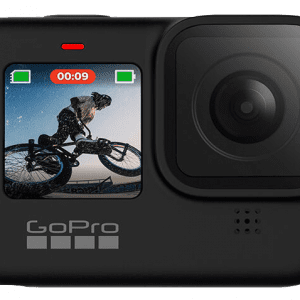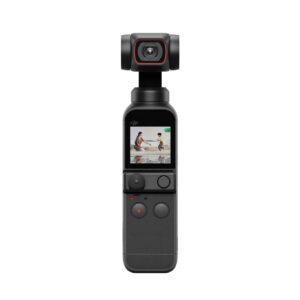Olympus Tough TG-Tracker
$575.00
Olympus Tough TG-Tracker
Only 1 left in stock
Description
Olympus has been in the rugged camera business for a very long time, with its first model, the Stylus 720SW, released way back in 2006. Ten years later the company has made the leap to action cams.
The TG-Tracker is a camcorder-shaped device that can capture 4K/30p and 1080/60p video as well as timelapses. The F2 lens has a whopping 204° field-of-view ‘on land’ and 94 degrees when you take it diving with its included underwater lens protector. It features a 7.2MP, 1/2.3″ BSI CMOS sensor paired with the company’s latest TruePic VII processor. (If 7.2 Megapixels sounds a bit low for 4K, you’re right – the camera has to interpolate in order to produce 4K as well as 8MP stills.)
The TG-Tracker captures every data point you could possibly want from an action cam.
Design-wise, there are two things that stand out. First is the camera’s flip-out (but non-articulating) 1.5″ LCD, which is mainly used for menu navigation. Second is what Olympus calls a built-in ‘headlight,’ capable of projecting up to 60 lumens of light.
What really makes the TG-Tracker unique, as its name implies, is tracking . It records location, altitude or water depth, temperature, orientation, and acceleration. All of this data is shown on graphs in the app, allowing you to see the pictures you took at a certain altitude or in a specific area of the map.
There are two other neat tricks the camera can do thanks to all these sensors. First, if the accelerometer detects a sudden change in equilibrium, it will put a chapter marker in your videos. Also, the TG-Tracker can detect when the camera goes underwater and switch the switch to the appropriate white balance setting.
All of this metadata is viewable in the Olympus Image Track app, which is where you can preview your photos and videos and then transfer them to your mobile device (save for 4K video)
To see how the TG-Tracker functions in the real world, we sent it to Mount St. Helens, an 8363 foot-tall stratovolcano most famous for its major eruption in 1980. But before we get into that, let’s take a look at the design and what it’s like to use this action camera.


